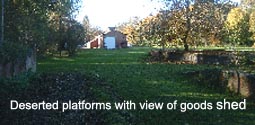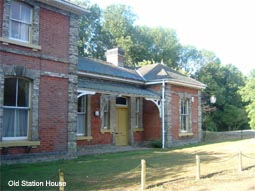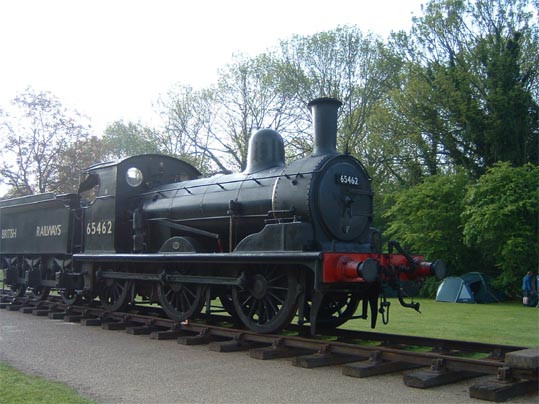

The Arrival of the Railway
After lying abandoned for so many years it was finally decided to use the castle grounds as the station for a modern railway.
When the railway finally came to Clare, the station was unique in Great Britain (and probably in the world) in as much as it was built within the grounds of an ancient castle. Fortunately, the station was in close proximity to the town that it was built to serve (unlike many rural stations).
As was often the case in those far-off days, the coming of the railway to Clare followed a series of fairly tortuous events that involved a number of failed companies, lapses in consent, and the seemingly interminable wrangles that frequently beset the construction of country railways.
Although the railway reached Clare in 1865, our story really starts eighteen years earlier when the Eastern Counties Railway (ECR) obtained powers in June 1847 to build an extension line from Sudbury to Clare via Long Melford, with a branch from Melford to Lavenham. The completion of the ECR line from London to Colchester left Sudbury some eleven miles adrift, and, to address this, the Colchester, Stour Valley, Sudbury and Halstead Railway (CSVS&HR) was projected, and was incorporated by Act of Parliament in 1846.
The company was authorised to construct a line from the ECR station at Marks Tey, five miles south-west of Colchester, to Sudbury, with intermediate stations at Chappel and Bures. The company was also authorised to build a branch from Chappel to Halstead.
The railway brought with it much greater prosperity and freedom. Not only could goods be moved about freely but people as well. For the first time in their lives local people could go on day tips to places they had never been before. They could take a day return to the seaside. A treat undreamed of by their parents.
A revolution was happening not just to transport but to
the every- day lives of working men and women.
The demand now was for faster and cheaper transport.
The line opened for all traffic on 2nd July, 1849. The principal engineering feature of the line was, and still is, the Chappel Viaduct which carries the railway over the River Colne. This imposing structure is 1,066ft. in length, has 32 arches each of 30 ft. span, and at its maximum height is 75 ft. Some 7,000,000 bricks were used in its construction and it was built at a cost of £32,000.
Finally permissions were granted for the construction of
sections of line from Sudbury to Long Melford; Melford to Clare; Clare
to Shelford, and Melford to Bury St Edmunds. Building of the Clare to
Shelford section commenced at the Cambridgeshire village and proceeded
eastwards to Clare; the section from Shelford to Haverhill being opened
for traffic on 1st June, 1865.
The remaining new lines (Havehill to Clare; Clare to Sudbury, and Melford
to Bury) were opened on the 9th of August that year. CLARE WAS NOW ‘ON
THE RAILWAY’!
At this time the railways were run by large independent groups all of whom were fierecly competitive.
This was rationallised in 1923 under the 1921 Railways Act and Britain’s rail network came under the control of four large groups, described as ‘The Big Four’. This situation persisted until 1948, when the railways were nationalised, and ‘British Railways’ were formed. The lines around Clare were run by BR’s Eastern Region.
During the 1950's and early 1960's the railways as a whole came under stiff competition from road transport. Larger lorries were available, people took to the cheap, mass produced cars and the expansion of the road and motorway network all added to a decline in revenues across the network. At the same time, costs were soaring, partly due to increased labour costs and partly due to expensive and often ill-fated projects from the early days of nationalisation.
It was in response to this that the Beeching Report recommended the wholesale closure of many branch lines, stations and depots. All parts of the Stour Valley line, except the original 1849 stretch from Sudbury to Marks Tey, were closed for passenger traffic on 6th March, 1967
Clare Country Park Past and Present
Clare Country Park Modern Times
Clare Country Park Managing the Country Park
CLARE COUNTRY PARK
- ARRIVAL OF THE RAILWAY
By Ian Hornsey

